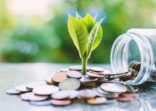“This is Asia’s century, without a doubt,” said Sean Kidney, chief executive of Climate Bonds Initiative. “And it’s looking like it will be a green bonds century.”
His comments stem from a report which found that green debt issuance has almost doubled in the Asean region, reaching $8.1bn in 2019 from $4.1bn in 2018, with Singapore taking the lead among the nations.
The Lion City contributed 55% of the Asean green debt issuance in 2019, reaching a cumulative issuance of $6.2bn.
The report, titled Asean Green Finance State of the Market 2019, was launched by Climate Bonds Initiative, supported by HSBC.
It analyses green bond and green loan issuances in southeast Asia and related policy developments.
Some of the highlights of the report are:
Globally, the volume of green bond and loan issuance rose sharply by over 50%, from $171bn in 2018 to $259bn in 2019, buoyed by strong interest from both investors and issuers.
Two-thirds of the proceeds are allocated to the buildings and energy sectors.
Asean issuance represented 3% of the global total and 12% of the Asia-Pacific region in 2019, up from 1% and 5% in 2018, respectively.
Cumulative Asean issuance since 2016 stands at $13.4bn as of 31 December 2019.


Issuers
Asean now has 39 green bonds and loans issuers.
The first mini hydro sukuk was issued in Malaysia in 2019 (by Telekosang Hydro One).
Financial corporates have become the largest issuer type of green bonds in Asean, representing 29% of the total, overtaking non-financial corporates (27%) and sovereign issuers (15%).
Green loans also feature strongly in the Asean market, with $2.9bn issued, representing 22% of the total.


Use of Proceeds
Green buildings topped the use of proceeds (UoP) at 34%, followed by renewable energy (33%), transport (12%), water (8%), waste (5%), with land use and other minor sectors comprising the remainder.

Enormous work still to do
Kidney continued: “Some governments are now acting, in Europe, China and Singapore. These policy shifts will have an impact. Regional governments, companies and banks have to get ahead of that wave of change.”
For example, the Asian Development Bank (ADB), together with national authorities of Asean+3 (Asean plus China, Japan and South Korea), introduced a technical assistance (TA) programme in March 2020, which seeks to create the necessary ecosystem for green local currency-denominated bonds for infrastructure development in the region.
Jonathan Drew, managing director, sustainable finance at HSBC Asia Pacific, said: “It’s heartening to see that green instruments are on the rise in southeast Asia as it demonstrates that the region is responding to issues linked to environmental degradation. However, the findings also reveal the disparity between nations and the enormous amount of work still to be done.
“Action now, to re-start economies on a lower carbon pathway, is the key to avoiding a climate crisis and the associated costs of crisis response and bring about the huge benefits of a better quality and more resilient future of opportunities.”
For more insight on continental European investment, please click on www.expertinvestoreurope.com

















